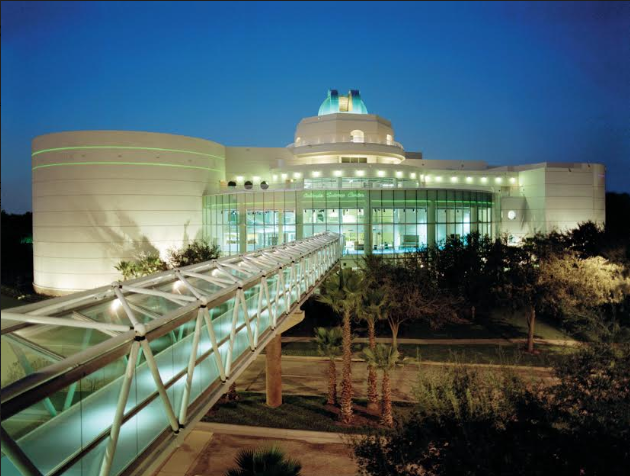Did you know that museums can be more energy intensive than hospitals? Luckily, there are opportunities to bring the world’s museum community together to work in the same direction toward climate goals.
Recognizing this, this past September the International Council of Museums (ICOM) unanimously adopted a resolution asserting that all museums have a role to play in shaping and creating a sustainable future.
Some countries have initiated dialogues with their institutions. For example, Julie’s Bicycle, with the support of Arts Council England, has been tracking the carbon footprint and use of clean energy in United Kingdom museums. As seen in the LEED project database, about 150 museums have earned LEED green building certification. Approximately 300 more have registered to go green. This is quite a feat for a complex building type.
Leaders Are Emerging
In honor of Global Climate Change Week this week, let’s take a look at the list of LEED-certified museums around the world. This list includes projects in the United States, Canada, Greece, China, Korea, Brazil, Turkey, Palestine and the Philippines. To learn more about each project, click on the name to view their achievements in the scorecard, and read their story if the project has completed an overview.
“By securing the third-party endorsement of LEED certification, we are showing the community our true commitment to the environment,” says JoAnn Newman, President and CEO of Orlando Science Center, which earned LEED Gold certification in 2010. “Operating a large building has a big impact on the environment, so it was a priority for us to reduce our energy and water usage. We want to be a conservation leader in our community, which is why we pursued LEED certification, not just once, but twice,” she says.

The first LEED certified museum building in Canada is the Canadian Museum for Human Rights located in Winnipeg, where temperature could drop to -40F in the winter. Yet strategies like green roofs, rainwater harvesting, natural lighting, and a high-efficiency heating system contributed to a sustainable approach that earned third-party certification. “Human rights and environmental responsibility are interconnected,” said CMHR president and CEO John Young. “People have the right to live in health and safety, to earn a sustainable livelihood and to maintain culture.”

On Twitter, @MuseumsforParis highlights museums’ accomplishments in sustainability, from enhancing their own building environment to upgrading their in-house education programs and exhibits.
In North America, almost 150 museums have voluntarily put their energy consumption into Energy Star Portfolio Manager (ESPM), a platform that can generate a carbon footprint calculation. Energy benchmarking fulfills the pledge of those museums committed to We Are Still In while demonstrating they are “talking the talk and walking the walk.”
More than 300 other museums in the U.S. have reported annually on the ESPM platform as a result of the growing number of cities with benchmarking laws. More recently, the state of California and the province of Ontario have similarly enacted benchmarking legislations.
Unique to the Museum Environment
Recognizing the critical balance between collection care and energy efficiency, the latest ASHRAE Chapter 24 on museums and associated facilities has issued new guidance this summer on humidity control with updated tables. This includes a larger temperature and humidity range tolerance that will help museums reduce their carbon footprints, while protecting valuable objects and archives.
Another important museum topic is indoor environmental quality. The ongoing schedules of changing exhibits in museums and their resulting paints, chemical compounds, and incoming exhibit materials constantly pose potential compromises on air quality. These significant museum functions would be best served by higher levels of air monitoring than are commonly in use. Not only would it enhance human health for the staff and visitors every day, air quality data gives the conservation department more opportunities to communicate with the facilities staff to ensure building envelope, lighting and HVAC maintenance will benefit the public, office and collection areas.
Opportunities for Museums Today and Tomorrow
Centuries-old cultural institutions can last well into the future. Longevity in museums can translate to a higher cumulative carbon footprint, so, considering that museums have a very long service life, “Design, Build, Operate Green” seems to be more important now than ever before. Benchmarking in existing museums and tracking performance is an imperative. In new construction, the greenest design strategies could be embraced: minimizing environmental impact while inspiring the community to think of the future as waste-, energy- and water-positive.
Joyce Lee, FAIA, LEED Fellow, is president of IndigoJLD providing green health, planning and design services on exemplary projects. Joyce served under Mayors Giuliani and Bloomberg as Chief Architect at the New York City OMB. Her work has received numerous awards. Contact: Info@IndigoJLD.com
